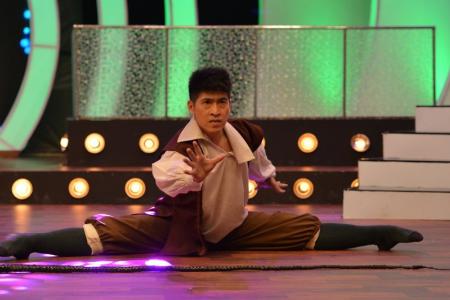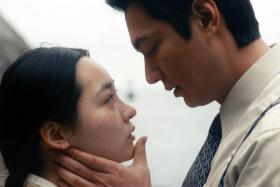Unable to walk properly, he's now in dance contest
He has been passionate about dance and martial arts since he was eight years old.
But at 19, he was dealt a blow - the possibility of being handicapped and not being able to walk properly anymore.
Despite going through four knee operations, Mr Derek Seong refused to let go of his dreams and is literally back on his feet.
Not only is he a full-time dance and martial arts trainer, he is also one of the Top 12 finalists of new reality TV dance competition Dance Singapore Dance (DSD), the local version of the popular Indian series Dance India Dance.
Auditions here started in March, with 200 hopefuls aged 16 to 35 vying for the grand prize of $10,000 as well the title of the inaugural DSD champion.
It premieres on Friday (July 18) at 8pm over Zee TV APAC (StarHub TV Ch 125/SingTel TV Ch 646) across 18 countries.
Amazing journey
Mr Seong, 35, told The New Paper:
“It was an amazing feeling to get through the audition rounds. Taking part in Dance Singapore Dance is a personal journey and is something you can’t put a price on or measure...
“Being disabled is a term given by the doctors.
"I feel it boils down to overcoming a psychological barrier and constantly pushing oneself beyond your limits.”
Mr Seong was meant to serve a 10-year contract with the Singapore Armed Forces but received an early release after eight years in the force.
He entered the army at 19, which was when he had his first “episode”.
He said the ligaments in his right knee tore because of all the rigorous military training he underwent, and all the martial arts training he did when he was younger just made it worse.
“My family wasn’t doing so well then (financially), so I signed on (as a regular) to help them,” said Mr Seong.
Injury woes
The longer he stayed, however, the more injuries he sustained.
In 2007, two years after his third surgery, he left the army and started his own dance group, Dancescape (Singapore), as it was his “calling”.
In 2013, it was finally his left knee that gave way and, once again, he needed surgery.
At that point, the worst thing that could have befallen him was to further injure himself to the point where it would be a “permanent disability” and he would need supports, braces or crutches, because there was “no other means of replacement”.
He added:
“I felt afraid. Being a dance trainer and (not being able to) dance or demonstrate basic stuff - how can I continue this career? I already left the army so there’s no turning back.
“I did what I could to keep myself going.”
Going against doctors’ orders - they advised against strenuous physical activity - he insisted on moving around.
“Rehabilitation (helped) strengthen my knees,” he said.
Seong had to build the muscles to “replace ligament loss”, so he would constantly be training because when he stops moving he loses his mobility.
He would continue to work on his legs, every day of the week, and would even do lunges when he was ill. Otherwise, there were times when his knees could lock and he wouldn’t be able to straighten them.
His physical disabilities limit him to the point where he can’t do very fast squats or tap dance, since his legs are too slow.
Different focus
Seong doesn’t dance much now, but focuses on choreography instead.
He doesn’t have that luxury in DSD though, but said the instructor and other contestants do their best to work around him, such as when he has to pose and support himself with his left leg, which is weaker than the other.
They only found out about his condition when he became a finalist.
“I had zero professional training but I would travel to different countries to learn from the pros there,” he said.
“Training for the competition was intense – I put in so many hours until I lost count. In the first week, at least 20 hours were dedicated to training and practice and leading up to the final week, I met with my mentor, choreographer Roche Mascarenhas, every night till about 4 to 5am.
“Thoughts of giving up came to me at times during those tough rehearsals.”
Support
But he didn’t give up.
His wife of four years has been his constant pillar of support, and so have his students.
Mr Seong said if he wins DSD, he would use the prize money to get replacement implants in both his knees, because he felt his left leg wasn’t properly fixed. The most expensive treatment he had cost $15,000.
But that the dream doesn’t stop there.
“(I want to) organise a dance competition for students," said Mr Seong.
"Mentoring the next generation is important to me and I would want to give away a bursary-type award to promising talent for them to further pursue their dance career.”
Get The New Paper on your phone with the free TNP app. Download from the Apple App Store or Google Play Store now


